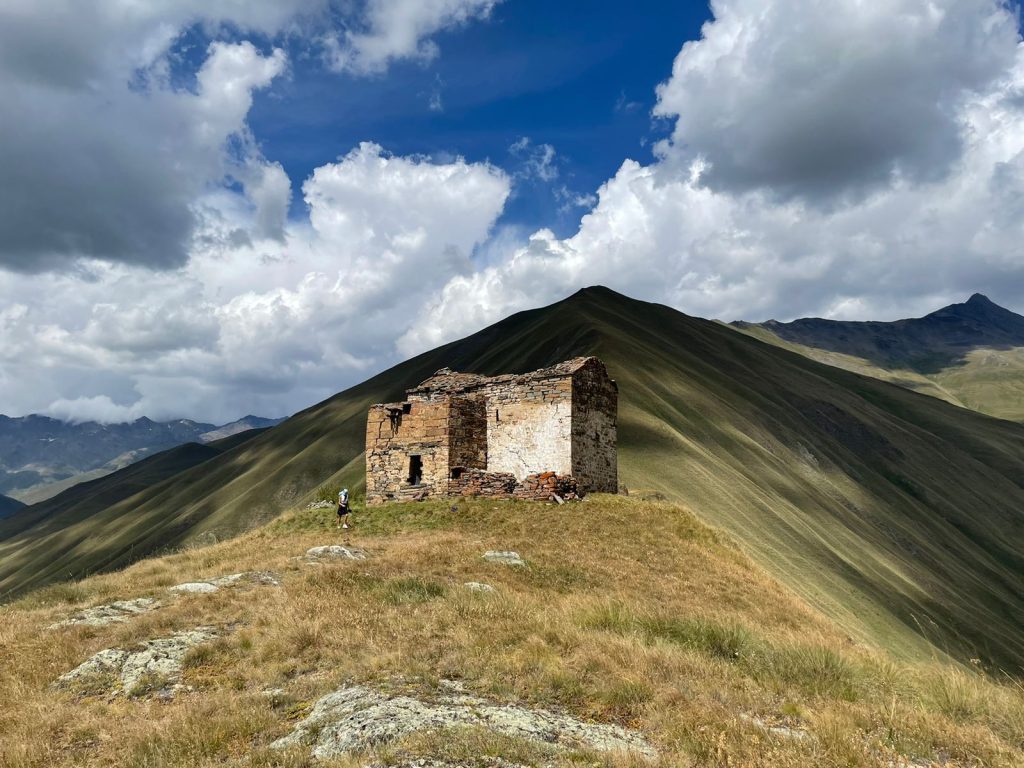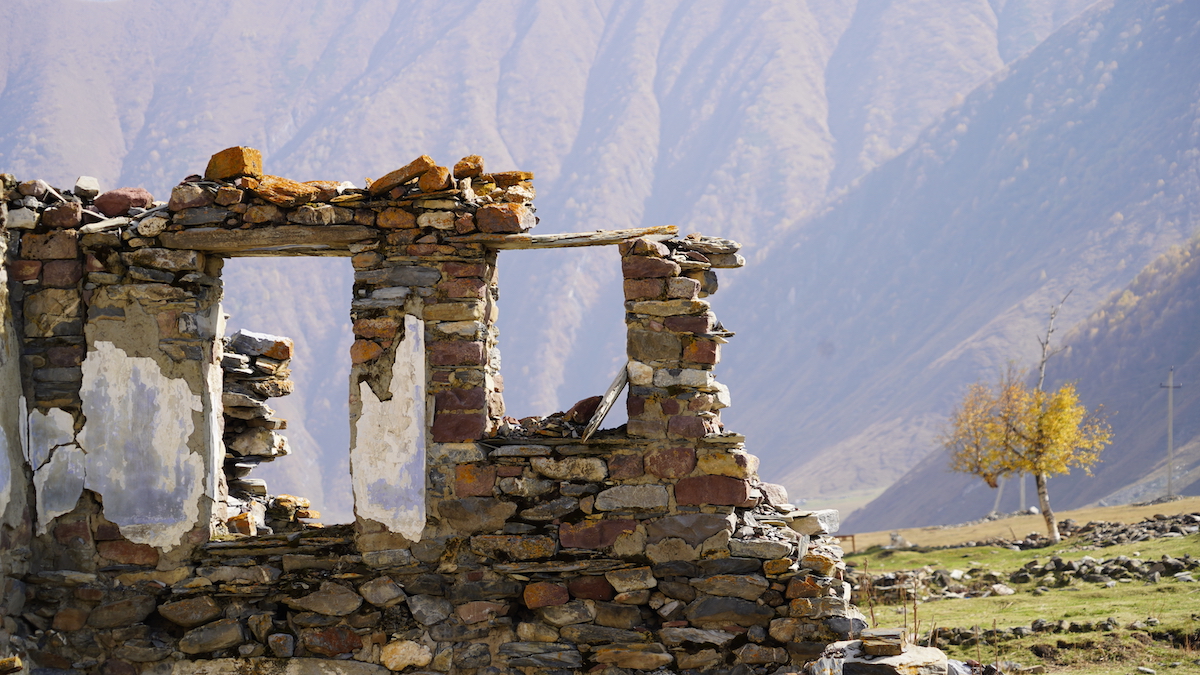Prayer in an abandoned village. For the first time in 16 years Ossetian pilgrims visit sanctuaries in Georgia's border zone
Pilgrimage to the Truso Gorge
After the August 2008 war, natives of Ossetian villages located in the Trusov Gorge in northeastern Georgia found themselves completely cut off not only from their historical homeland, but also from their shrines, which they used to try to visit every summer. And now, in August 2023, for the first time in 16 years, a group of Ossetian pilgrims were able to visit their native land.
The Truso Gorge is located between the Caucasus and Khokh ranges in the Kazbegi district of Georgia and borders on the north with the Russian republic of North Ossetia. During the Soviet period, ethnic Ossetians lived in the Truso Gorge. As a result of the Georgian-Ossetian conflict that erupted in the early 1990s, most of them moved to North Ossetia.
For the next decade and a half Ossetians came to Truso every year on pilgrimage, and the Georgian authorities allowed them to do so. But the situation became even more complicated after August 2008. Relations between Georgia and Russia deteriorated, and it became almost impossible to get to those villages in the Truso Gorge that were in the border zone.
Letter to the patriarch
In the 20th of August Ossetians celebrate the day of Alarda – the mythological deity of smallpox, measles and eye diseases, the patron saint of women and children. He is prayed to when they ask him to protect people from sickness and cure severe diseases. One of the numerous sanctuaries dedicated to Alarda is located in the village of Sivrjeltæ in the Truso Gorge.
In early summer, former local resident Akhsar Kallagov wrote a letter to Patriarch Ilia II of Georgia and asked him to help organize a pilgrimage to the Ossetian shrines in the Trusov Gorge.
The letter was forwarded to the Russian Foreign Ministry’s office in Vladikavkaz, and from there it traveled to Georgia through diplomatic channels.
In August, Kallagov was informed that the Georgian side had given the go-ahead and the pilgrims could set out on their journey.
- August, 2008. Chronology of the war over South Ossetia in facts and photos
- Fenced In: Stabilising the Georgia-South Ossetia separation line. Photo essay by Crisis Group
- The Georgian Military Highway or ‘bottleneck’ of the Caucasus?
Transit through the homeland
Akhsar Kallagov says that natives of the Truso Gorge consisting of 23 people headed by an elder left for the place of pilgrimage on August 20.
After formalizing the relevant procedures at the Kazbegi checkpoint on the Russian-Georgian border, they entered the former Ossetian village of Kob, located along the Military-Georgian road:
“In Kob we spent the night in empty Ossetian houses. Before leaving I took the keys from their owners in Vladikavkaz. We bought three rams from local shepherds and prepared them for sacrifice there. The next morning we left for the Truso Gorge.

Thanks to the patronage of Ilia II, Georgian border guards issued them permission to pass into the border zone. The guards did not escort the column of pilgrims, as it used to happen previously.
“They believe that we are law-abiding citizens. Yes. I gave my word that we will legally pass to the shrine, pray to the Almighty. We will visit our villages, homes, visit the graves of our ancestors. Georgian police always accompanied us before. They saw that we were not doing anything illegal. This time they gave us such trust. It was a gesture of goodwill from Georgia,” Akhsar Kallagov says.
After passing through several Ossetian villages in the Truso Gorge, the pilgrims reached Sivrjeltæ.
The Alarda sanctuary stands on the top of the Alardiyy khokh mountain, and to get there one has to climb seven kilometers.
“In the old days, three people climbed barefoot to the very ridge: a clergyman, an elder of one of the local families and a younger one. I was a teenager myself when I visited like that.
In the clearing our ancestors once set a large stone of white quartz. A bell buried in the ground is hidden under it. Every year the clergy poured beer into this bell. The next year they offered prayers with this beer, drank it, refilled it with a new, freshly brewed drink, and pushed the stone back.
Then the priests would go up into the sanctuary itself. And this happened every year as long as Ossetians lived in these parts,” recalls Kallagov.
However, this time Akhsar and his fellows did not climb to the top of the mountain to the sanctuary itself because of time constraints. The pilgrims settled at the foot of the mountain and offered their prayers from there.
“We are overjoyed at this too. We are grateful to all those who helped us in visiting our shrines.”
During the 16 years of isolation, once prosperous villages have fallen into disrepair. Many houses have collapsed.
Svetlana Tuaeva’s parents come from the neighboring village of Burmæsig (Burmasyg), and the last time she was in these parts was 20 years ago:
“All these years I dreamed of returning to these fabulously beautiful mountains. I’ve been delighted. I’m very glad we were allowed into the gorge and it was good to be allowed in. We, of course, made an effort to see our lodgings as well. The roof was broken in our house in Burmæsig. We also stopped by the village where my grandmother lived. There only one wall was left of her house. Everyone who went to their native villages, everyone was crying. No one held back their tears.
Pilgrimage to the Truso Gorge

Toponyms and terminology used in the article, and views, opinions and strategies expressed in it do not necessarily reflect the views and opinions of JAMnews or any employees thereof. JAMnews reserves the right to delete comments it considers to be offensive, inflammatory, threatening, or otherwise unacceptable.



















